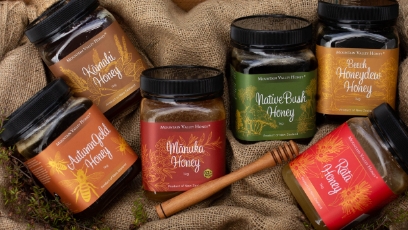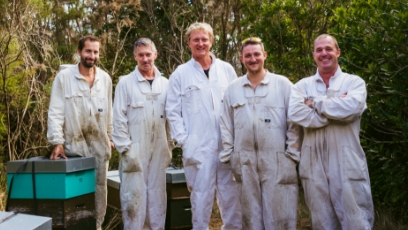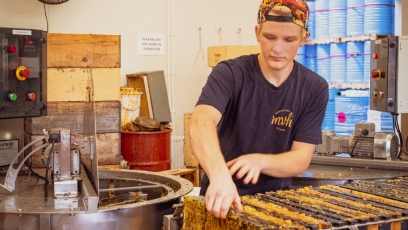Prices in USD © 2022 Mountain Valley Honey Limited Partnership. All Rights Reserved
Frequently Asked Questions
We have approximately 2500 hives spread across the top of the South Island and the most of our bee’s forage in the Marlborough Sounds and South Marlborough during the honey flow.
We don’t really know from year to year what honey flavours we will collect. Each season is different which is always exciting as we wait for the pollen test results. The bees will forage differently at each site, depending on the available floral sources at the time and because they can fly a long way to collect honey (up to 5 km) results can be a real surprise. The pollen test results tell us the percentage of pollens found in the honey which helps us determine what we will call each batch. Our Manuka along with a pollen test is certified to meet the MPI Manuka definition and its MG rating.
We do at certain times of the year as do all bee keepers in NZ. The mite has spread throughout the country now so it is a case of control. To do this we use a synthetic treatment in the hives twice a year before honey flow and after honey harvest. This keeps mite numbers low, allowing the hives to remain strong and healthy.
Yes, we can send honey to most countries around the world. Some countries have restrictions on how much you can send, and others have areas that you cannot send honey. For more information, see our Shipping & Returns page.
Most days we don’t get stung, but some days we might be working an apiary site and come across a grumpy hive that isn’t happy about having its roof lifted off. Then they can be a little interesting to work with. Luckily this doesn’t happen very often. We are respectful to the hives and generally have happy bees.
We now extract our own honey, however it is not packed into retail packs straight away. We pump it into large drums and store until we need to pack each batch. We slowly and carefully warm the drum over 5-7 days to bring it up to a temperature that makes it easy to pump the honey into the packing tank and then straight into the jar. That’s it. No processing, no creaming, no whipping, nothing added and nothing taken away.
If a hive is hungry we will feed it just enough to get it on its feet again. Usually we do this in early Spring if required. This is not something we have to do every year or with every hive. It will depend on their natural food sources and other factors that affect the hive.
The invasion of the Varroa Mite across New Zealand means we have to treat our hives with a synthetic miticide. Treatment is always done outside of the honey producing season. We hope that in the not too distant future we may be able to use organic treatments however, at this stage, the results we have had using current organic treatments have not been effective enough on a commercial level to ensure healthy hives and good production.
Our honey supply is seasonal so the flowering each year dictates what flavours are produced and how much of each flavour we harvest. Sometimes plants within range of our hives don’t have good flowering or the bees might favour different local pollen sources. This means that our supply in some flavours may not last the year.
Want to know more?
Got a question we haven’t answered? Send us a message using the form below and we’ll get back to you promptly!


